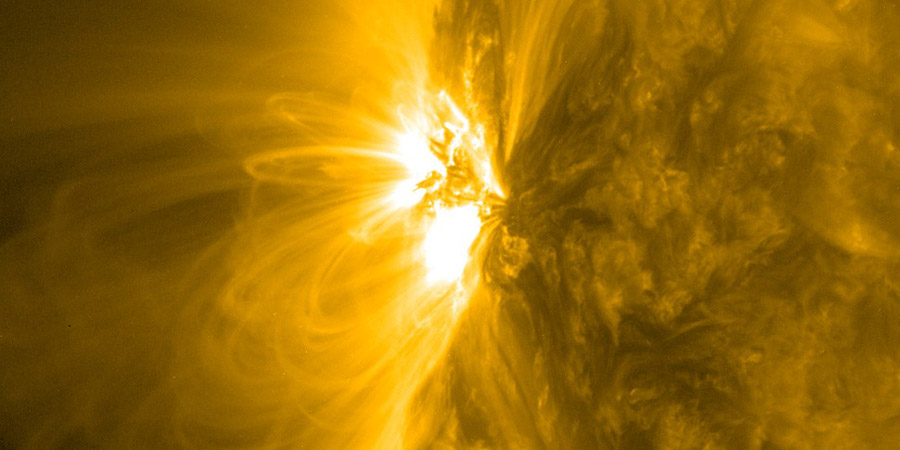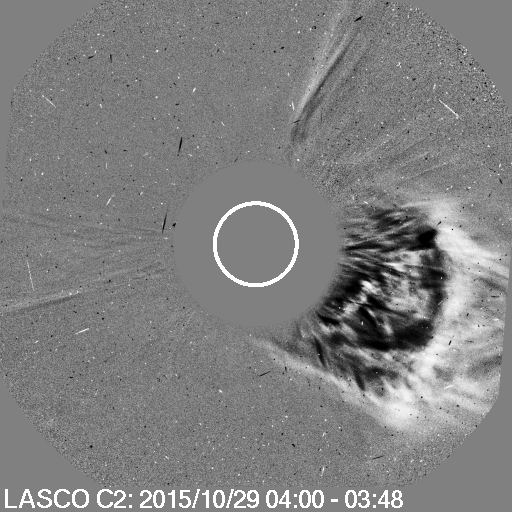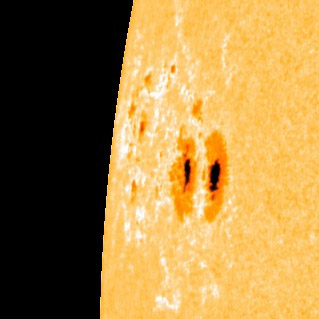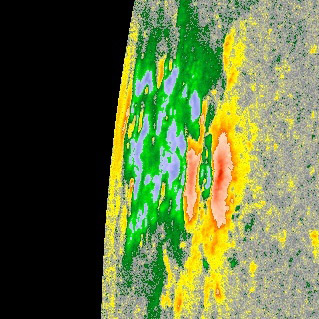S1 radiation storm, sunspot region 2443
Thursday, 29 October 2015 13:59 UTC

A far side eruption just beyond the west limb is responsible for an increase in the high energy protons here at Earth. A minor S1 solar radiation storm is currently in progress.
S1 solar radiation storms are known to cause minor issues with HF radio trough polar regions. The resulting coronal mass ejection is of course directed away from Earth as this was a far side event. Do not be fooled by the increase of low energy protons and electrons on EPAM, this is caused by the parker spiral which makes it possible for energetic particles to reach Earth due to the rotation of the Sun.

Image: SOHO/LASCO C2 coronagraph image showing the far side coronal mass ejection of this morning.
Sunspot region 2443
A new sunspot region which was active on the far side of the Sun has now rotated into view. It has recieved sunspot number 2443 from the NOAA SWPC. There is some faculae surrounding this sunspot region which indicates it might have decayed a bit already. It is still hard to accurately analyse this sunspot region due to it's proximity near the east limb. We nonetheless can not exclude an M-class solar flare from this sunspot region due to the activity it displayed while on the far side.


Images: SDO/HMI imagery showing sunspot region 2443.
Thank you for reading this article! Did you have any trouble with the technical terms used in this article? Our help section is the place to be where you can find in-depth articles, a FAQ and a list with common abbreviations. Still puzzled? Just post on our forum where we will help you the best we can!
Latest news
Latest forum messages
Support SpaceWeatherLive.com!
A lot of people come to SpaceWeatherLive to follow the Sun's activity or if there is aurora to be seen, but with more traffic comes higher server costs. Consider a donation if you enjoy SpaceWeatherLive so we can keep the website online!

Space weather facts
| Last X-flare | 2024/03/28 | X1.1 |
| Last M-flare | 2024/04/27 | M3.0 |
| Last geomagnetic storm | 2024/04/26 | Kp5+ (G1) |
| Spotless days | |
|---|---|
| Last spotless day | 2022/06/08 |
| Monthly mean Sunspot Number | |
|---|---|
| March 2024 | 104.9 -19.8 |
| Last 30 days | 138.1 +30.7 |


